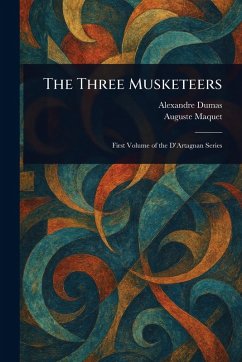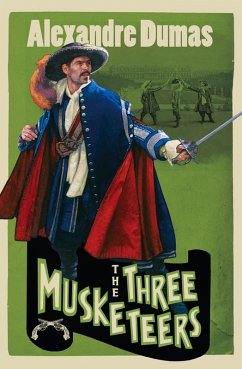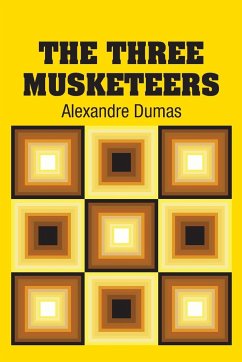
The Three Musketeers
Versandkostenfrei!
Versandfertig in 1-2 Wochen
47,99 €
inkl. MwSt.

PAYBACK Punkte
24 °P sammeln!
The Three Musketeers By Alexandre DumasThe Three Musketeers (French: Les Trois Mousquetaires) is a historical adventure novel written in 1844 by French author Alexandre Dumas. It is in the swashbuckler genre, which has heroic, chivalrous swordsmen who fight for justice.Set between 1625 and 1628, it recounts the adventures of a young man named d'Artagnan (a character based on Charles de Batz-Castelmore d'Artagnan) after he leaves home to travel to Paris, hoping to join the Musketeers of the Guard. Although d'Artagnan is not able to join this elite corps immediately, he is befriended by the thre...
The Three Musketeers By Alexandre DumasThe Three Musketeers (French: Les Trois Mousquetaires) is a historical adventure novel written in 1844 by French author Alexandre Dumas. It is in the swashbuckler genre, which has heroic, chivalrous swordsmen who fight for justice.Set between 1625 and 1628, it recounts the adventures of a young man named d'Artagnan (a character based on Charles de Batz-Castelmore d'Artagnan) after he leaves home to travel to Paris, hoping to join the Musketeers of the Guard. Although d'Artagnan is not able to join this elite corps immediately, he is befriended by the three most formidable musketeers of the age - Athos, Porthos and Aramis, "the three inseparables"- and becomes involved in affairs of state and at court.Dumas presents his novel as one of a series of recovered manuscripts, turning the origins of his romance into a little drama of its own. In the Preface, he tells of being inspired by a scene in Mémoires de Monsieur d'Artagnan (1700), a historical novel by Gatien de Courtilz de Sandras, printed by Pierre Rouge in Amsterdam, which Dumas discovered during his research for his history of Louis XIV. According to Dumas, the incident where d'Artagnan tells of his first visit to M. de Tréville, captain of the Musketeers, and how, in the antechamber, he encountered three young Béarnese with the names Athos, Porthos, and Aramis, made such an impression on him that he continued to investigate. That much is true-the rest is fiction: He finally found the names of the three musketeers in a manuscript titled Mémoire de M. le comte de la Fère, etc. Dumas "requested permission" to reprint the manuscript permission was granted:Now, this is the first part of this precious manuscript which we offer to our readers, restoring it to the title which belongs to it, and entering into an engagement that if (of which we have no doubt) this first part should obtain the success it merits, we will publish the second immediately.In the meanwhile, since godfathers are second fathers, as it were, we beg the reader to lay to our account, and not to that of the Comte de la Fère, the pleasure or the ennui he may experience.This being understood, let us proceed with our story.













